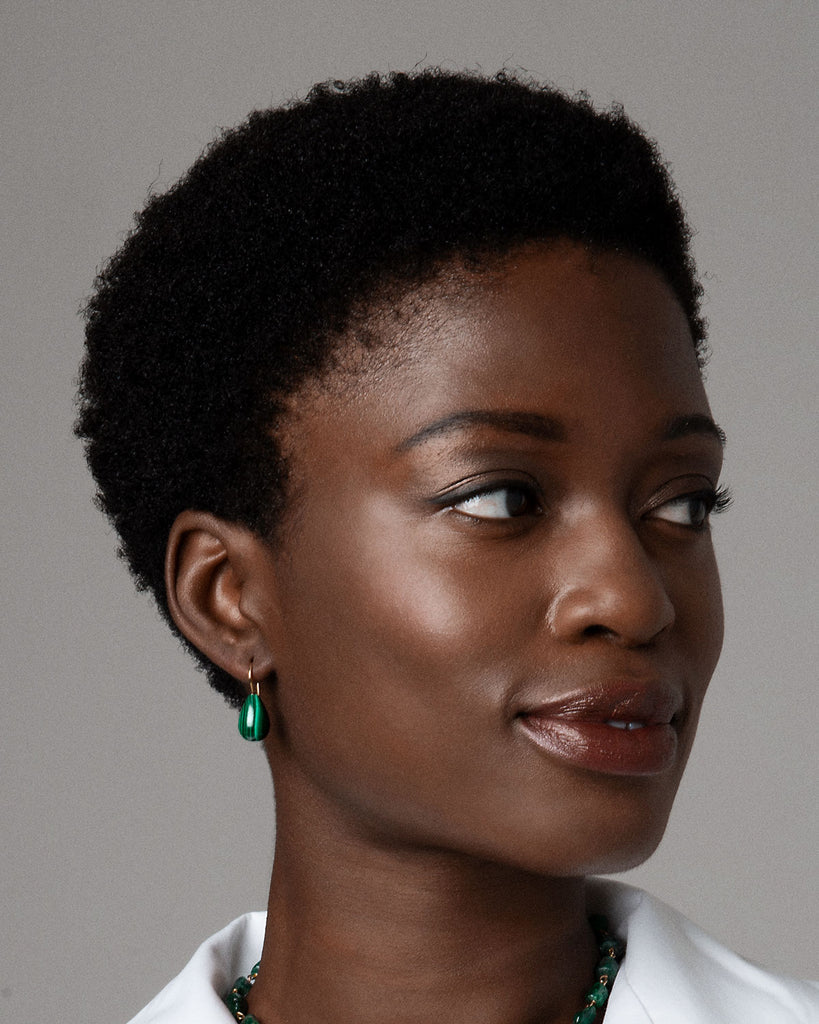
Behind The Gems: Malachite
Share

“Behind the Gems” is a long-running monthly series that takes you on an exclusive, behind-the-scenes tour of our signature collections.
In this edition, we turn all our attention to malachite, a mesmerising green gem that has long been appreciated for its specific colour…
Malachite Facts: Composition, Origins and Appearance
Malachite is part of the carbonates mineral family and it is widely spread around the world: Egypt, Russia, Democratic Republic of the Congo, Israel, USA, Mexico, France, Australia and Zambia are all sources of malachite. The name itself comes from the Greek word "molochitis", meaning "mallow-green stone".
It forms relatively close to the surface, usually alongside limestone in the oxidisation zone above copper deposits. As such, it is rather soft, only a 3.5 to 4.0 on the Mohs scale.
Malachite is fully opaque, but it has a varying colour stratification thanks to the different layers in the mineral. This gives it a complex appearance, with the bands varying from light pastel green to very dark green, almost black.
But, given its softness and mineral structure, malachite is very vulnerable to staining. Even weak acids could stain it. This is why the gemstone is not ideal for rings or bracelets, but is, instead, used for jewellery that’s less exposed like earrings and necklaces.
Malachite Facts: History and Symbolism
Given how easy it was to carve, malachite was used in personal ornaments and in building decorations throughout history. Moreover, it was possible to grind into a powder and to mix with oils or egg tempera to make paint. From Egypt to Japan and China, malachite green was popular because it did not fade when exposed to sunlight. It has gradually been replaced by synthetic paints and the use of malachite has shifted solely to jewellery.
The gemstone was thought to bring emotional peace to the wearer or to protect children from evil spirits. A specific interpretation was common in Ancient Egypt, where its green colour was associated with the circle of life - death, resurrection, new life and fertility. In fact, afterlife itself was described as a “field of malachite”.
Our Malachite Pieces: The Backstory
The marbled pattern of the malachite is always varied, which leads to no two pieces ever being the same. We felt inspired by this special characteristic and we set out to find the most gracious way of turning it into jewellery.
On the one hand, we chose to pair it with yellow gold, so as to give warmth to the stone and add a rich, luxurious feel.
On the other, we opted to use it only for earrings, as they are the least likely to come in contact with chemicals, abrasive surfaces etc.
You can see (and shop) our malachite creations below:




